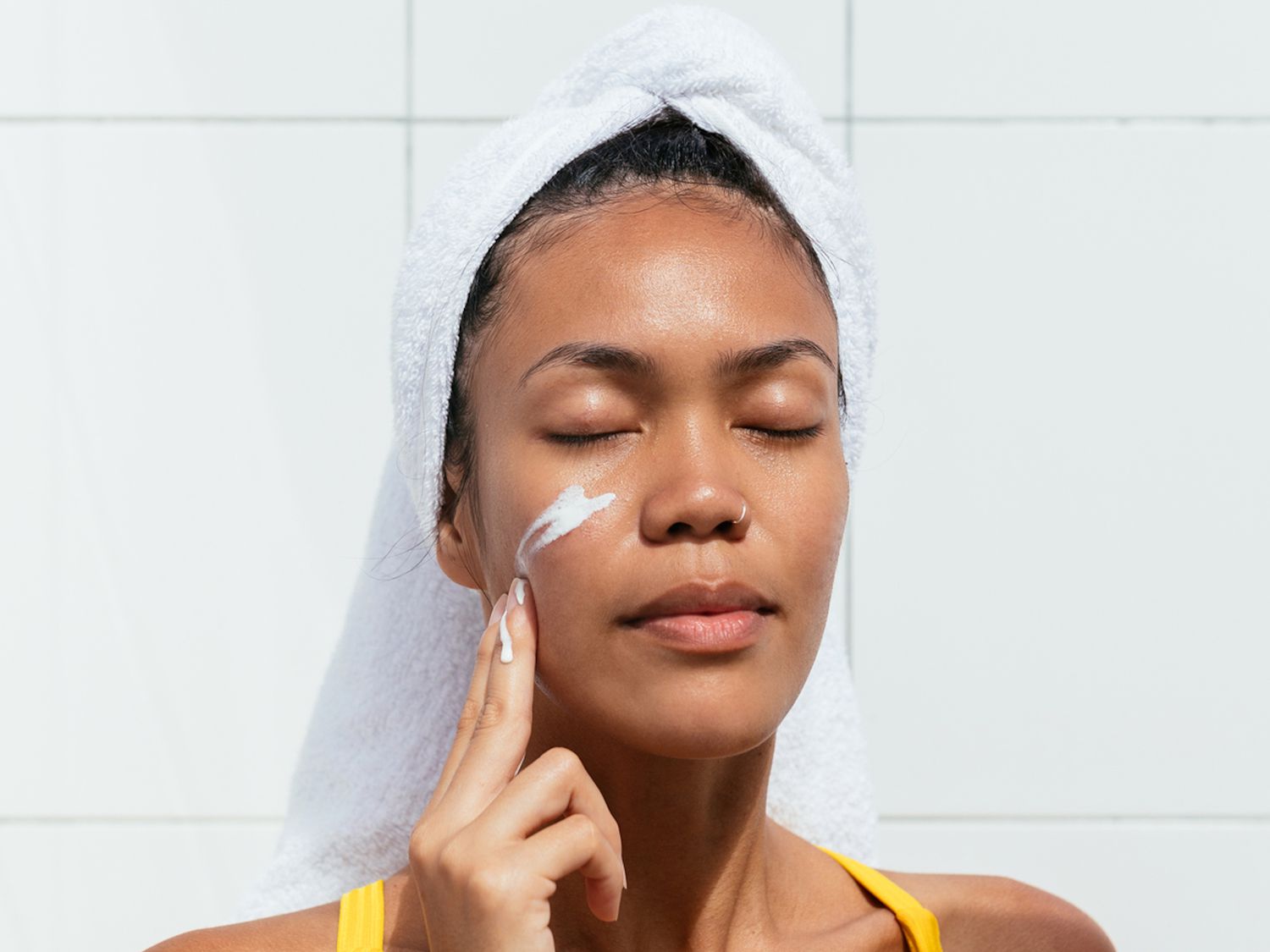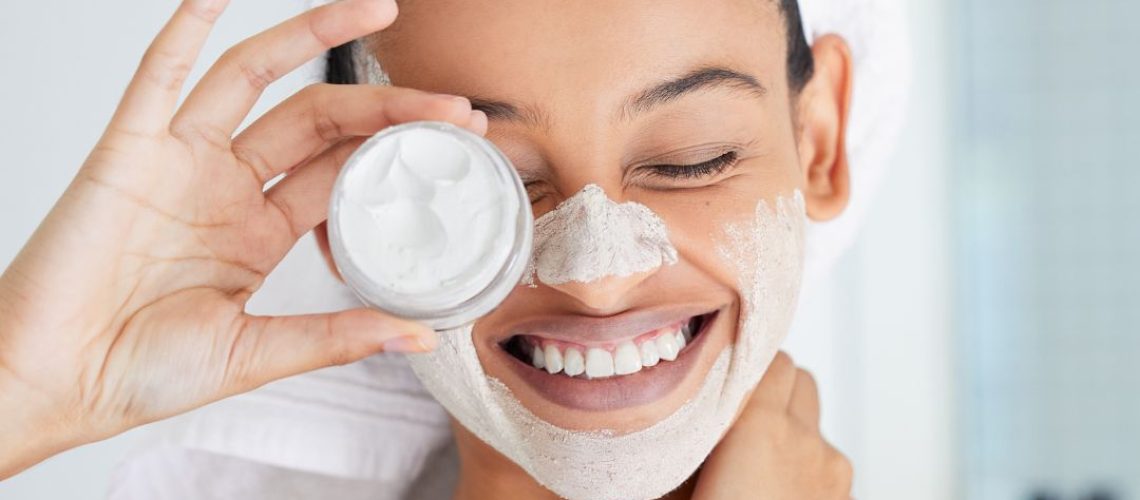Dealing with dry skin can feel like a constant battle. That tight, uncomfortable feeling, the flaky patches, and the overall dullness—I’ve been there, and I get it. The good news is that with the right approach, you can transform your skin from parched to plump and radiant. It’s not about finding one miracle product, but about building a consistent skin care routine that focuses on gentle cleansing, deep hydration, and protecting your skin’s barrier. This guide will walk you through everything you need to know, step-by-step, to create a routine that truly works for you.
Understanding Dry Skin
Before we dive into routines, let’s quickly cover what dry skin actually is. At its core, dry skin is a skin type that naturally produces less sebum, or oil, than other skin types. This lack of oil weakens your skin’s protective barrier, making it harder to retain moisture. The result? You might notice persistent flakiness, a rough texture, a feeling of tightness (especially after cleansing), and a generally dull appearance.

What Causes Dry Skin
So, why do some of us have dry skin? It’s often a mix of internal and external factors.
- Genetics: Sometimes, it’s just in your DNA. You might be predisposed to producing less oil.
- Environmental Triggers: Cold weather, low humidity, and harsh winds can strip moisture right out of your skin.
- Lifestyle Habits: Those long, hot showers feel amazing, but they’re a major culprit in stripping your skin’s natural oils. Over-washing and using harsh, stripping products also contribute.
- Age-Related Changes: As we get older, our skin naturally produces less sebum. This is a common concern when looking at skincare for over 40s, where barrier support becomes even more crucial.
- Hormonal Fluctuations: Changes during pregnancy or menopause can impact your skin’s hydration levels.
Dry Skin vs Dehydrated Skin
This is a really important distinction. Dry skin lacks oil, while dehydrated skin lacks water. Dry skin is a type you’re born with, while dehydration is a temporary condition that can affect anyone—even those with oily skin.
Think of it this way: a dry sponge is rough and brittle. A dehydrated sponge is still a sponge, but it has no water in it. You can often tell the difference because dehydrated skin might still produce oil but look dull and show fine, crepey lines. The treatment is slightly different, as you might need to focus purely on water-based hydration rather than adding more oils.
Essential Ingredients for Dry Skin
Building a routine is all about choosing the right players for your team. For dry skin, we want ingredients that attract moisture, smooth the surface, and lock it all in.
Humectants for Deep Hydration
Humectants are moisture magnets. They pull water from the air and the deeper layers of your skin to the surface.
- Hyaluronic Acid: This is the star player, famous for holding up to 1,000 times its weight in water. Always apply it to damp skin to give it water to pull from.
- Glycerin: A reliable and effective humectant that helps keep the skin soft and supple.
Emollients for Skin Smoothing
Emollients are the peacemakers. They fill in the gaps between skin cells, smoothing out rough patches and strengthening the skin barrier.
- Ceramides: These are lipids that are naturally part of your skin barrier. Adding them back topically helps repair the barrier and prevent moisture loss.
- Shea Butter & Squalane: These plant-derived ingredients soften the skin and provide nourishment without feeling overly greasy.
Occlusives for Moisture Lock
Occlusives are the bodyguards. They form a protective seal on your skin’s surface to prevent all that hard-earned hydration from evaporating.
- Dimethicone: A silicone-based ingredient that creates a breathable barrier.
- Petrolatum: A classic, highly effective occlusive that is great as a final step at night, especially on very dry patches.
Morning Skincare Routine for Dry Skin
Your morning routine is all about hydration and protection. You want to prepare your skin to face the day without stripping it.

Step 1 – Gentle Cleansing
Forget that “squeaky clean” feeling—it’s a sign you’ve stripped your skin. In the morning, you only need a gentle refresh. Opt for a creamy, hydrating, and sulfate-free cleanser. Massage it onto damp skin and rinse with lukewarm water, never hot.
Step 2 – Hydrating Toner
An alcohol-free toner is your first step in layering hydration. Look for ingredients like glycerin, rose water, or aloe. You can apply it with a cotton pad, but I prefer patting it directly onto my skin with my hands to minimize waste and maximize absorption.
Step 3 – Hydrating Serum
This is where you bring in the active ingredients. A serum with hyaluronic acid is a fantastic choice for dry skin. Apply it to your still-damp skin from the toner. If you want to add an antioxidant, a gentle Vitamin C serum can help protect your skin from environmental damage.
Step 4 – Eye Cream
The skin around your eyes is thinner and often the first place to show dryness. A dedicated eye cream can provide targeted hydration. Use your ring finger to gently pat it around your orbital bone.
Step 5 – Moisturizer
Now it’s time to lock in that serum. Choose a moisturizer that contains both humectants and emollients, like ceramides and glycerin. A cream texture usually works best for dry skin. Massage it in gently while your skin is still slightly damp.
Step 6 – Broad-Spectrum SPF
This step is non-negotiable. Sun exposure can worsen dryness and damage your skin barrier. Use a broad-spectrum sunscreen with at least SPF 30 every single day, even when it’s cloudy. Look for hydrating formulas that won’t leave a white cast.
Night Skincare Routine for Dry Skin
Nighttime is when your skin goes into repair mode. Your nighttime skincare routine should focus on deep nourishment and barrier support.

Step 1 – Double Cleansing
If you wear makeup or sunscreen (which you should!), a double cleanse is a game-changer.
- Oil-Based Cleanser: Start with a cleansing oil or balm on dry skin to melt away makeup and SPF.
- Water-Based Cleanser: Follow up with your gentle, creamy cleanser to wash everything away without stripping your skin.
Step 2 – Toner Application
Apply the same hydrating, alcohol-free toner you used in the morning to replenish moisture after cleansing.
Step 3 – Treatment Serum
Your night serum can focus on repair. Peptides are great for strengthening the skin barrier. If your skin isn’t overly sensitive, you can introduce a gentle retinoid a few nights a week to help with cell turnover, but always start slow.
Step 4 – Eye Cream
Use a slightly richer eye cream at night to work on hydration and fine lines while you sleep.
Step 5 – Night Moisturizer
Go for a thicker, more emollient cream at night. This is where ingredients like shea butter and ceramides really shine. It will create a nourishing cocoon for your skin to repair itself overnight.
Step 6 – Overnight Mask (Optional)
Once or twice a week, if your skin feels extra thirsty, you can swap your night moisturizer for a hydrating overnight mask. It acts as a supercharged moisturizer that you leave on until morning.
Additional Dry Skin Care Tips
A great routine is the foundation, but a few extra habits can make a huge difference.

How Often to Moisturize
For dry skin, moisturizing twice a day is the minimum. Don’t be afraid to reapply during the day if you feel tight or dry. And always, always apply moisturizer to damp skin within a minute of stepping out of the shower to lock that water in.
Weekly Treatments
- Gentle Exfoliation: It might sound counterintuitive, but removing the buildup of dead skin cells helps your hydrating products penetrate better. Avoid harsh physical scrubs. Instead, opt for a gentle chemical exfoliant like lactic acid once a week.
- Hydrating Masks: A weekly sheet mask or cream mask with ingredients like honey or oat can provide an amazing boost of moisture.
Lifestyle Adjustments
Skincare isn’t just what you put on your face. You can find more tips for healthy skin by looking at your daily habits. Staying hydrated by drinking enough water, eating foods rich in omega-3s (like salmon and walnuts), and using a humidifier in your room during dry months can all support your skin from the inside out.
Common Mistakes to Avoid with Dry Skin
Sometimes, what you don’t do is just as important as what you do. Are you making any of these common mistakes?
Using Hot Water
Hot water feels nice, but it strips your skin’s natural oils. Stick to lukewarm water for cleansing your face and try to keep your showers short (5-10 minutes).
Over-Exfoliating
Exfoliating is a balancing act. Doing it too often or with harsh products will damage your skin barrier, leading to more dryness and irritation. Once or twice a week with a gentle formula is plenty.
Choosing Harsh Cleansers
If your cleanser leaves your skin feeling tight, it’s too harsh. Ditch any products with high concentrations of alcohol or sulfates (like Sodium Lauryl Sulfate) that strip your skin.
Skipping Sunscreen
Sunscreen isn’t just for sunny days or oily skin. UV damage weakens your skin’s barrier, making it even harder for it to hold onto moisture. It’s a must-have for everyone, every day.
Applying Products to Completely Dry Skin
Your products, especially serums and moisturizers, work much better on damp skin. Pat your face gently with a towel after washing, leaving it slightly damp before moving on to your next step.
Choosing the Right Products for Dry Skin
Navigating the skincare aisle can be overwhelming. Here’s a simple guide to reading labels.

What to Look For
Focus on products formulated as creams, lotions, or balms. Key ingredients to look for on the label include:
- Hyaluronic Acid
- Ceramides
- Glycerin
- Niacinamide
- Shea Butter
- Squalane
- Peptides
What to Avoid
Be cautious with products that contain high amounts of these ingredients, as they can be irritating or drying:
- Alcohol Denat (often found in toners)
- Fragrance (a common irritant)
- Sulfates (like SLS/SLES in cleansers)
- Harsh physical scrubs (like those with large, jagged particles)
When to See a Dermatologist
While a consistent routine can solve most dryness issues, sometimes you need professional help. It’s time to book an appointment with a dermatologist if you experience:
- Dryness that doesn’t improve with a good routine.
- Severe itching, cracking, or bleeding.
- Signs of infection, like redness or pus.
- The possibility of an underlying condition like eczema or psoriasis.
Building a skincare routine for dry skin is a journey of patience and consistency. Listen to your skin, choose gentle and nourishing products, and don’t forget to protect it every day. Your skin will thank you with a soft, hydrated, and healthy glow. For more wellness and self-care insights, feel free to explore more at www.notonetype.org.


You may also like this
Best Skin Care Routine 2025: Step-by-Step Guide
A great skin care routine is the foundation of healthy, radiant skin. Whether you’re new...
Nov
Skin Routine for Teens: A Simple Guide to Healthy Skin
Developing a simple, effective skin routine for teens is one of the best things you...
Nov
Balanced Skincare Routine for Combination Skin
Finding the right skin care routine for combination skin means balancing oily zones with dry...
Nov
Best Nighttime Skincare Routine for Oily Skin in 2025
If you have oily skin, the end of the day might feel like a race...
Nov
Skincare for Over 40s: Best Routines, Products & Ingredients for Radiant Mature Skin
Hello, lovely people! Let’s talk about something that feels like it happened overnight: waking up...
Nov
Easy Tips for Healthy Skin Everyone Should Follow
Healthy skin really starts with the small things we do every day. It’s about the...
Nov